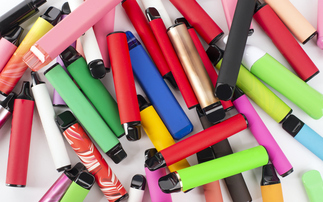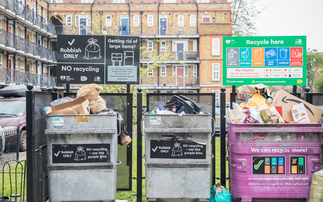Changing your business model from a linear take, make, dispose model can seem daunting, but there are concrete steps any business can take in pursuit of SDG12
Circularity requires the rethinking of products and services across their whole lifecycle in order to make them more durable, renewable, reusable, repairable or upgradable, and recyclable.
It is a daunting challenge for any business, requiring a fundamental re-think of how they design products and services, operate on a day to day basis, and execute long term strategies.
However, without such drastic reforms the pursuit of SDG12 and its vision of sustainable production and consumption becomes impossible.
How then can organisations transition away from resource flows and models that have defined their operations for decades, if not centuries, and deliver genuinely circular business models?
A good place to start, according to experts, is to analyse the biggest impacts and opportunities across the lifecycle of products and services. Think about the energy, materials, and water that the business is reliant on, and how the production and consumption of those core elements impacts nature.
Companies can then take this information and apply circular principles to design out waste, increase resource productivity, and decouple growth from natural resource consumption.
This is, of course, much easier said than done. As such BusinessGreen spoke to circular economy experts to get their top tips on where businesses should start as they develop a circular SDG12 strategy.
Target, measure, act
"Be really clear what your environmental impacts are, and measure them," advises Dr Richard Swannell, development director at WRAP. Start by measuring waste, then you quickly realise the scale of the opportunity for reducing it, and can act on that information, he says.
He also recommends that this audit process should extend beyond the organisation's four walls. "Work internally, then with your suppliers, and your customers," he says. "You begin to start to encourage system-wide change by your own actions as a business."
Gudrun Cartwright, environment director at Business in the Community, agrees accurate measurement of resource use and the establishment of a baseline is critical. "Once you know where your key challenges and opportunities are, set targets to address the issues most material to your business," he says. "It may be that these are not in your own operations, but that working with suppliers and customers will create the best impact."
He also advises that any targets eventually need to move belong per capita or resource intensity metrics. "Ultimately we need absolute change, not just relative to production units or sales," he argues.
Get over the fear
"A lot of businesses are paralysed by this goal, it touches so many products that they do not know where to start," says Claire Brady, programme manager of sustainable business at Bioregional, of the circular economy vision.
Consequently, it is critical to look at how circular economy models can evolve to open up new revenue streams. There are opportunities to build better relationships with customers through subscription-based models, Brady points out. "If you think creatively, there are ways that enable consumers help you close the loop on the flow of resources that are inherent in your product, and almost lock [customers] in through loyalty," she argues.
It's a business strategy
It is the primacy of these new business models that should be at the heart of any circular economy strategy. Stop thinking of the circular economy as an environmental strategy, advises Brendan Edgerton, director of circular economy, World Business Council for Sustainable Development. "There are environmental benefits that come with a circular model, but chief executives can recognise the opportunity and the economic value that it could bring through aligning financial and environmental priorities," he argues.
It is by highlighting the commercial benefits that support for circular economy models can be secured.
Look at the longer-term impacts
To ensure a product has a lower environmental impact during its production and consumption, you have to think through the whole lifecycle, including delivery to customer and end of life, says Beverley Cornaby, programme manager at the Cambridge Institute for Sustainability Leadership.
"Maybe your actual product is very sustainable, but is not delivered in a sustainable way," she observes. "What is your consumer base going to accept? What are the implications if it doesn't get properly managed at end of life? Then you're looking at a reuse model, or a different type of recycling. You're looking at trade-offs. There aren't straightforward answers at the moment."
Any credible circular economy model needs to recognise that there are lots of different scenarios that have to be modelled and managed.
Wipe the slate clean
Pentatonic undertakes thought experiments with clients, asking them to forget the experience they have gained through years in their sector, and think instead about how they would design the product now.
For example a skirt made of several different materials, including a metal button, represents a major recycling challenge that could easily be averted at the design stage. "You don't need to work out how to recycle the metal, just change the material it's made of," says Philip Mossop, chief operating officer at Pentatonic. "Bringing in a third party with no preconceptions can be the easiest way to get the answer."
Embed circularity across the business
You cannot create circularity as a silo within an organisation, continues Mossop. "Companies come to us with their sustainability team," he says. "But we need to meet the marketing manager, the operations manager, the service manager. Sustainability might affect some parts of the business more than others, but it has to be immersed across the business, not be seen as a silo."
Collaborate widely
Like most of the SDGs, sustainable production and consumption can not be engineered in isolation. Policymakers, customers, investors, and multiple businesses in lengthy global supply chains all have a role to play in developing truly circular industries.
Cartright recommends that any business serious about pursuing SDG12 needs to "engage your employees in creating an innovation culture, work with your suppliers to find new materials and methods, and make it easy for your customers to play their part in solving our shared challenges". Ultimately, SDG12 encompasses everyone.
Tap the resource base
Beyond the recommendations offered by the experts we spoke to a number of major reports have been produced by organisations working on the circular economy to help businesses get started or advance their strategies on sustainable consumption and production. For example, the New Big Circle by the World Business Council for Sustainable Development, the Circular Economy, Cracking the Challenge from Bioregional, and the Circular Office Guide by Business in the Community. They are all worth checking out.









